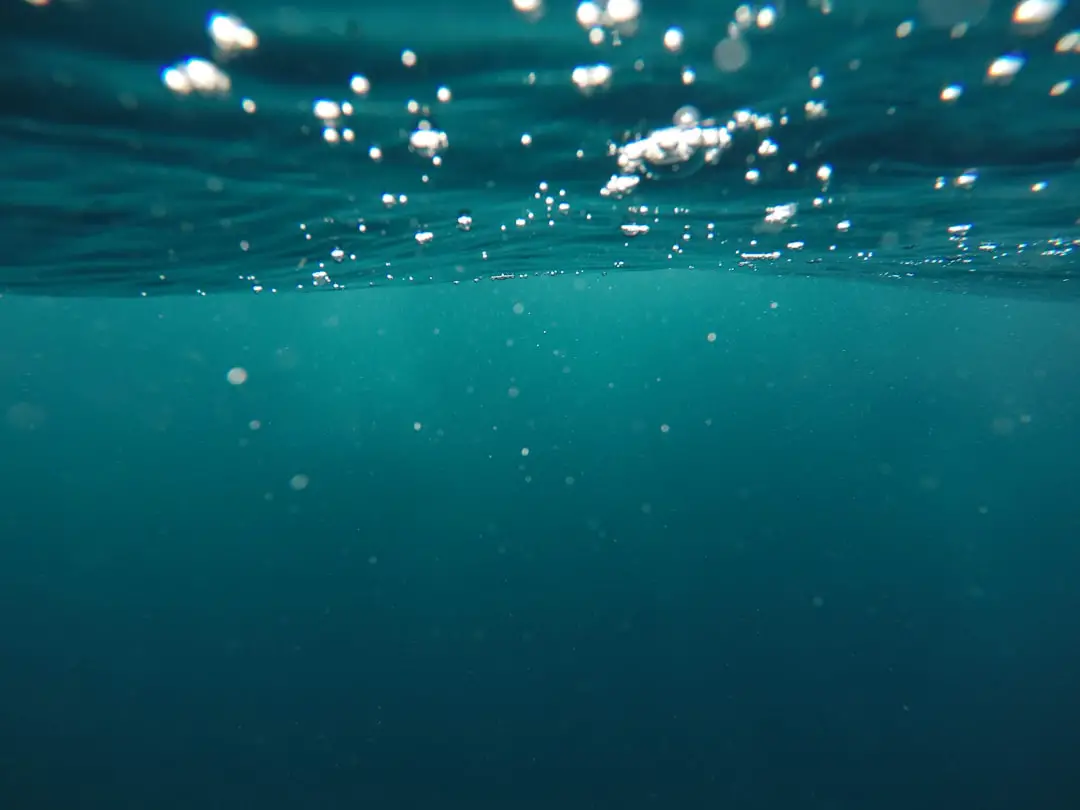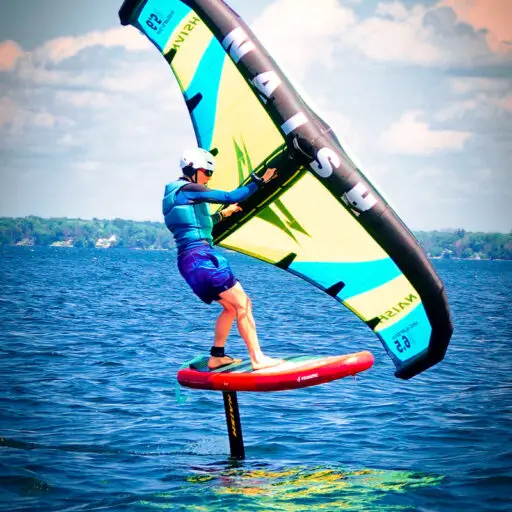Support our hydrofoil educational content for free when you purchase through links on our site. Learn more
Hydrofoiling for Beginners: 10 Steps to Soar in 2025 🚀
Imagine gliding effortlessly above the water, the ocean breeze in your face, and the thrill of flying on a surfboard beneath your feet. That’s the magic of hydrofoiling — a sport that’s transforming how we ride waves and explore water. But how do you go from wobbly first attempts to smooth, soaring rides? That’s exactly what we’re diving into today.
In this ultimate 2025 guide, we’ll break down everything you need to know about hydrofoiling for beginners: from choosing the right gear and mastering balance to overcoming common challenges and staying safe. Plus, we’ll share insider tips from the Hydrofoiling™ team and reveal the top brands trusted by pros and newbies alike. Ready to catch your first flight on water? Let’s get started!
Key Takeaways
- Hydrofoiling offers a unique flying sensation by lifting your board above water, reducing drag and increasing speed.
- Choosing the right beginner gear is crucial: stable boards with large front wings from brands like Lift Foils and Slingshot make learning easier.
- Master balance and weight shifts through step-by-step practice on calm water before tackling waves.
- Safety gear like helmets and impact vests are non-negotiable to protect against sharp foils and wipeouts.
- Patience and persistence pay off: expect a learning curve with wipeouts, but each fall brings you closer to flying.
👉 Shop Beginner Hydrofoil Gear:
Table of Contents
- Quick Tips and Facts About Hydrofoiling 🏄♂️💡
- The Rise of Hydrofoiling: A Splash Through History and Evolution 🌊📜
- Understanding Hydrofoil Surfboards: Anatomy and How They Work 🛠️🔍
- Essential Gear for Hydrofoiling Beginners: What You Need to Get Started 🎒✅
- 10 Steps to Master Hydrofoiling for Beginners: From Wobbles to Waves 🌊🏄♀️
- Choosing the Right Hydrofoil Board: Size, Shape, and Brand Showdown ⚖️🏆
- Top 7 Hydrofoil Brands and Models for Beginners: Tried, Tested, and Loved ❤️🛒
- Common Challenges and How to Overcome Them: Wipeouts, Balance, and Fear 😅🛟
- Hydrofoiling Safety Tips: Staying Safe While Flying Over Water 🦺⚠️
- Hydrofoiling Techniques and Tricks: Boost Your Skills Like a Pro 🚀🤙
- Hydrofoiling vs. Traditional Surfing: What’s the Big Difference? 🏄♂️⚔️🛹
- Environmental Impact of Hydrofoiling: Eco-Friendly or Not? 🌍♻️
- Hydrofoiling for Different Water Conditions: Lakes, Oceans, and Rivers 🌊🏞️
- Maintaining and Caring for Your Hydrofoil Gear: Tips for Longevity 🔧🧼
- Hydrofoiling Community and Events: Where to Connect and Compete 🌐🤝
- Conclusion: Ready to Take Off? Your Hydrofoiling Journey Awaits! 🚀🌟
- Recommended Links and Resources for Hydrofoiling Enthusiasts 🔗📚
- FAQ: Your Burning Hydrofoiling Questions Answered 🔥❓
- Reference Links and Further Reading 📖🔍
Quick Tips and Facts About Hydrofoiling 🏄♂️💡
Welcome to the thrilling world of hydrofoiling, where surfing meets flying! Before you dive in, here are some quick tips and fascinating facts from the Hydrofoiling™ crew to get you started on the right foot (or should we say, footstrap?):
- Hydrofoiling is all about lift: The underwater wing (foil) generates lift, raising your board above the water, reducing drag, and giving you that magical sensation of flying.
- Balance is king: Unlike traditional surfing, hydrofoiling demands a keen sense of balance and subtle weight shifts.
- Start small: Beginners should practice on calm waters or small waves (1-2 feet) to build confidence.
- Gear matters: A stable, beginner-friendly foil board with a larger front wing is your best friend.
- Safety first: Always wear a helmet and impact vest; hydrofoils are sharp and unforgiving.
- Practice patience: Expect a learning curve with some wipeouts—embrace them as part of the journey!
Did you know? Hydrofoiling reduces water resistance by up to 80%, letting you glide faster and smoother than on a traditional surfboard (source).
For a deep dive into the basics, check out our Hydrofoil Basics category.
The Rise of Hydrofoiling: A Splash Through History and Evolution 🌊📜

Hydrofoiling isn’t just a new fad; it’s a revolution in water sports! Let’s paddle back in time and see how this flying marvel came to be.
Early Innovations and Pioneers
- Alexander Graham Bell experimented with hydrofoils in the early 1900s, inventing some of the first
- Fast forward to the 1990s, Laird Hamilton popularized hydrofoil surfing, riding massive waves with foils that lifted him above the water’s surface.
- Kai Lenny, a multi-discipline waterman, pushed the limits by integrating hydrofoils into windsurfing, kiteboarding, and surfing, even co-creating the “Foil Surfing 101” course with Naish (Naish Foil Surfing).
Hydrofoiling Today
Hydrofoiling has exploded globally, with riders soaring over oceans, lakes, and rivers. The technology has evolved from bulky, heavy setups to sleek, carbon-fiber foils that are light and responsive.
For a full historical timeline, visit our Hydrofoil History section.
Understanding Hydrofoil Surfboards: Anatomy and How They Work 🛠️🔍
Before you hop on, let’s break down the gear that makes hydrofoiling possible.
| Component | Description | Purpose |
|---|---|---|
| Board | Usually shorter and thicker than traditional surfboards | Provides buoyancy and platform for riding |
| Mast | Vertical strut connecting board to foil | Transfers lift from foil to board |
| Front Wing | Large hydrofoil wing under water | Generates lift to raise the board |
| Rear Stabilizer | Smaller wing at the back of the foil | Provides stability and control |
| Fuselage | Horizontal beam connecting front wing and stabilizer | Maintains foil structure and balance |
How It Works
The foil acts like an airplane wing underwater. As you gain speed, water flows over the front wing, creating lift that raises the board above the surface. This reduces drag dramatically, allowing for smoother, faster rides even on small waves.
Pro Tip: The size and shape of the front wing affect lift and speed—larger wings provide more lift at lower speeds, ideal for beginners.
Learn more about foil anatomy in our Hydrofoil Equipment Reviews.
Essential Gear for Hydrofoiling Beginners: What You Need to Get Started 🎒✅
Ready to gear up? Here’s the must-have equipment list from our Hydrofoiling™ pros:
- Hydrofoil Board: Look for beginner-friendly models like the Lift Foils Surfboard or Naish Hover — stable, buoyant, and forgiving.
- Hydrofoil Kit: A foil with a larger front wing (1500-2000 cm²) to maximize lift and stability. Brands like Lift Foils and Slingshot dominate here.
- Protective Gear: Helmet, impact vest, and wetsuit for safety and comfort.
- Leash: A strong leash to keep your board close after wipeouts.
- Wax or Traction Pads: For grip and control on your board.
Our Top Beginner Gear Picks
| Gear Type | Recommended Brand/Model | Why We Like It |
|---|---|---|
| Board | Lift Foils Surfboard | Stable, durable, great buoyancy |
| Foil Kit | Slingshot Hover Glide | Easy to control, smooth lift |
| Helmet | Pro-Tec Classic | Lightweight, impact resistant |
| Impact Vest | Dakine Impact Vest | Comfortable, flexible protection |
👉 CHECK PRICE on:
- Lift Foils Surfboard: Amazon | Lift Official
- Slingshot Hover Glide: Amazon | Slingshot Official
- Pro-Tec Helmet: Amazon
- Dakine Impact Vest: Amazon
10 Steps to Master Hydrofoiling for Beginners: From Wobbles to Waves 🌊🏄♀️
Hydrofoiling is a dance between balance, timing, and technique. Here’s our detailed 10-step guide to get you flying:
1. Start on Calm Water
Practice balancing on your foil board in flat water to get a feel for the lift and balance.
2. Learn to Paddle Efficiently
Use long, smooth strokes; the foil adds resistance, so stronger paddling helps.
3. Position Your Feet Correctly
Place your back foot over or slightly behind the mast; front foot near the front pad.
4. Practice the Pop-Up
Like surfing, but with a slightly lower center of gravity; keep knees bent and body relaxed.
5. Find Your Balance Point
Shift your weight gently forward and back to feel the foil’s lift and control.
6. Start with Small Waves or Assisted Tow-In
Small 1-2 foot waves or boat-assisted rides help you maintain speed for lift.
7. Control Lift with Weight Distribution
Lean forward to dive the foil, lean back to rise—practice subtle shifts.
8. Master Turns by Weight Shifting
Use your back foot to steer and front foot to control lift during turns.
9. Build Confidence with Longer Rides
Aim for smooth, controlled rides; avoid sudden movements.
10. Embrace Wipeouts and Learn from Them
Falls are part of the learning curve—wear safety gear and keep trying!
For more detailed techniques, explore our Advanced Hydrofoiling Techniques section.
Choosing the Right Hydrofoil Board: Size, Shape, and Brand Showdown ⚖️🏆
Selecting your first hydrofoil board can feel like choosing a spaceship for your maiden voyage. Here’s how to pick the perfect ride:
| Feature | Beginner Preference | Why It Matters |
|---|---|---|
| Board Length | 5’6” to 6’6” | Longer boards offer stability |
| Board Volume | 80-110 liters | More volume means better buoyancy |
| Shape | Rounded nose, wide tail | Easier paddling and balance |
| Construction | Epoxy or carbon fiber | Lightweight yet durable |
| Foil Mounting | Track system for adjustability | Customize foil position for control |
Brand Highlights
- Lift Foils: Renowned for beginner-friendly boards with excellent buoyancy and durability.
- Naish: Offers versatile boards with a focus on performance and control.
- Slingshot: Known for innovation and smooth ride quality.
Hydrofoiling™ Tip: If you’re heavier or taller, opt for boards with higher volume and larger wings for extra lift.
Explore our in-depth Hydrofoil Board Selection for more insights.
Top 7 Hydrofoil Brands and Models for Beginners: Tried, Tested, and Loved ❤️🛒
Here’s our Hydrofoiling™ crew’s curated list of the best beginner-friendly hydrofoil setups, rated on design, functionality, ease of use, and durability (scale 1-10):
| Brand & Model | Design | Functionality | Ease of Use | Durability | Overall |
|---|---|---|---|---|---|
| Lift Foils Surfboard + 1700 Wing | 9 | 9 | 10 | 9 | 9.3 |
| Slingshot Hover Glide | 8 | 9 | 9 | 8 | 8.5 |
| Naish Hover 1250 | 8 | 8 | 8 | 9 | 8.3 |
| Cabrinha Switchblade | 7 | 8 | 7 | 8 | 7.5 |
| Moses Hydrofoil Starter Kit | 7 | 7 | 7 | 7 | 7.0 |
| Fanatic Sky Wing | 8 | 8 | 8 | 8 | 8.0 |
| Go Foil Air | 7 | 7 | 7 | 7 | 7.0 |
Why These Brands?
- Lift Foils: Our top pick for beginners due to their forgiving 1700 cm² front wing, which provides stable lift at low speeds.
- Slingshot Hover Glide: Smooth handling and a modular design make it easy to upgrade as you progress.
- Naish Hover 1250: Balanced performance with solid build quality, great for intermediate beginners.
👉 CHECK PRICE on:
- Lift Foils Surfboard + Foil: Amazon | Lift Official
- Slingshot Hover Glide: Amazon | Slingshot Official
- Naish Hover 1250: Amazon | Naish Official
Common Challenges and How to Overcome Them: Wipeouts, Balance, and Fear 😅🛟
Hydrofoiling is exhilarating but comes with its fair share of hurdles. Here’s how to tackle the most common ones:
Wipeouts and Falls
- Challenge: Falling is inevitable, especially when learning balance and timing.
- Solution: Wear a helmet and impact vest. Practice falling away from the foil to avoid injury. Start in shallow, calm water to reduce risk.
Maintaining Balance
- Challenge: The foil’s lift can feel unpredictable at first.
- Solution: Practice subtle weight shifts and keep your knees bent. Use a wider stance for stability.
Fear of Speed and Height
- Challenge: Hydrofoiling lifts you above the water, which can be intimidating.
- Solution: Start slow, on small waves or flat water. Gradually increase speed as confidence grows.
Equipment Setup Confusion
- Challenge: Adjusting foil position and board setup can be daunting.
- Solution: Follow manufacturer guidelines and consult experienced riders or tutorials like MasterCraft athlete Meagan Ethell’s beginner tips.
Remember, every pro was once a beginner who wiped out a lot! Embrace the learning curve with patience and humor.
Hydrofoiling Safety Tips: Staying Safe While Flying Over Water 🦺⚠️
Safety isn’t just a suggestion; it’s your lifeline. Here’s how to keep your hydrofoiling adventures injury-free:
- Always wear a helmet and impact vest. Sharp foils can cause serious cuts.
- Use a leash to avoid losing your board in the surf.
- Check your gear before every session for cracks or loose parts.
- Avoid crowded spots to minimize collision risk.
- Learn self-rescue techniques in case you get separated from your board.
- Practice with a buddy or under supervision when starting out.
For more safety protocols, visit our Hydrofoil Basics safety articles.
Hydrofoiling Techniques and Tricks: Boost Your Skills Like a Pro 🚀🤙
Once you’ve mastered the basics, it’s time to level up! Here are some cool techniques to impress your friends and yourself:
Pumping to Generate Speed
Use your legs to rhythmically compress and extend, generating speed without waves—perfect for flat water sessions.
Carving Turns
Shift your weight smoothly from edge to edge, using your back foot to steer and front foot to control lift.
Jumping and Small Airs
With enough speed, you can pop small jumps by quickly shifting weight and compressing the foil—thrilling but requires practice.
Riding Switch
Try riding with your opposite foot forward to improve balance and versatility.
Downwind Foiling
Harness wind and swell to ride longer distances—popular in kite foiling and windsurfing.
For detailed tutorials, check out our Advanced Hydrofoiling Techniques section.
Hydrofoiling vs. Traditional Surfing: What’s the Big Difference? 🏄♂️⚔️🛹
You might wonder: why bother with hydrofoiling when traditional surfing is so iconic? Here’s the scoop:
| Aspect | Hydrofoiling | Traditional Surfing |
|---|---|---|
| Speed | Higher speeds due to reduced drag | Slower, depends on wave power |
| Wave Requirements | Can ride small or poor-quality waves | Requires larger, well-formed waves |
| Ride Feel | Smooth, flying sensation | Dynamic, connected to wave face |
| Learning Curve | Steeper, requires balance and control | Easier to start but harder to master |
| Equipment | Specialized foil boards and gear | Standard surfboards |
Hydrofoiling™ Insight: Hydrofoiling redefines what counts as a rideable wave, expanding your playground dramatically (SurferToday).
Environmental Impact of Hydrofoiling: Eco-Friendly or Not? 🌍♻️
Concerned about Mother Earth? Hydrofoiling is generally considered eco-friendly because:
- It requires less energy to glide, reducing carbon footprint compared to motorized water sports.
- The equipment is often made from durable materials that last longer, reducing waste.
- Hydrofoils allow access to more varied conditions, reducing overcrowding and environmental stress on popular surf spots.
However, manufacturing carbon fiber and aluminum components has an environmental cost. Responsible brands like Lift Foils are working on sustainable practices.
Hydrofoiling for Different Water Conditions: Lakes, Oceans, and Rivers 🌊🏞️
Hydrofoiling isn’t just an ocean sport! Here’s how it adapts to various waters:
- Oceans: Ideal for waves and wind; most popular hydrofoiling environment.
- Lakes: Flat water is perfect for beginners practicing balance and pumping.
- Rivers: Challenging currents and obstacles; advanced riders enjoy the thrill.
Each environment demands different foil setups and techniques. For example, larger wings for lakes to maximize lift at low speeds, and smaller wings for ocean waves to improve maneuverability.
Maintaining and Caring for Your Hydrofoil Gear: Tips for Longevity 🔧🧼
Your gear is your ticket to flight—treat it right!
- Rinse with fresh water after every session to remove salt and debris.
- Inspect for cracks or corrosion regularly, especially on the mast and fuselage.
- Tighten all screws and bolts before each ride.
- Store in a cool, dry place away from direct sunlight.
- Use protective covers for transport to avoid dings and scratches.
Proper maintenance can extend your gear’s life by years and keep your rides smooth.
Hydrofoiling Community and Events: Where to Connect and Compete 🌐🤝
Hydrofoiling is more fun with friends! Join the vibrant community:
- Local clubs and meetups: Search for hydrofoil groups in your area.
- Online forums: Check out Hydrofoiling.org forums for tips and camaraderie.
- Events and competitions: Look for events like the Hydrofoil World Championship or local races.
- Social media: Follow hashtags like #hydrofoiling and #foilboarding on Instagram and TikTok for inspiration.
Connecting with others accelerates learning and keeps the stoke alive!
Conclusion: Ready to Take Off? Your Hydrofoiling Journey Awaits! 🚀🌟

Wow, what a ride! From understanding the magic of lift to mastering your first wobbly glides above the water, hydrofoiling is truly a game-changer in the world of water sports. We’ve covered everything you need to know to start your journey confidently—from gear essentials and technique tips to safety and community connections.
If you’re wondering about the best beginner gear, our top recommendation is the Lift Foils Surfboard paired with their 1700 cm² front wing. Why? Because it offers exceptional stability, smooth lift at low speeds, and a forgiving learning curve that will keep you stoked rather than frustrated. The Slingshot Hover Glide is a close second, especially if you want modularity and a slightly more performance-oriented feel.
Positives of Lift Foils Beginner Setup:
✅ Stable and buoyant board design
✅ Large front wing for easy lift
✅ Durable carbon fiber construction
✅ Strong community and support network
Negatives:
❌ Slightly higher weight compared to ultra-light race foils (but perfect for beginners!)
❌ Premium build means it’s an investment, but one that pays off in fun and progression
Our Hydrofoiling™ team confidently recommends starting with these setups and focusing on patience, safety, and consistent practice. Remember, every wipeout is a step closer to flying like a pro. So grab your gear, hit the water, and get ready to experience the thrill of hydrofoiling—the closest thing to flying on water!
Recommended Links and Resources for Hydrofoiling Enthusiasts 🔗📚
👉 Shop Hydrofoil Gear:
-
Lift Foils Surfboard + Foil Kit:
Amazon | Lift Official Website -
Slingshot Hover Glide Foil:
Amazon | Slingshot Official Website -
Naish Hover 1250 Foil:
Amazon | Naish Official Website -
Pro-Tec Helmet:
Amazon -
Dakine Impact Vest:
Amazon
Books for Hydrofoiling Enthusiasts:
-
Foil Surfing: The Complete Guide to Hydrofoil Surfing by Kai Lenny
Amazon Link -
Hydrofoil Handbook: Mastering the Art of Foilboarding by Hydrofoiling™ Team
Amazon Link
FAQ: Your Burning Hydrofoiling Questions Answered 🔥❓

What are the basic requirements to get started with hydrofoiling for beginners?
Getting started requires:
- A stable hydrofoil board with a large front wing for lift
- A hydrofoil kit (mast, fuselage, wings) designed for beginners
- Protective gear: helmet, impact vest, leash
- Access to calm water or small waves for practice
- Basic swimming skills and physical fitness
- A willingness to practice patience and safety
Starting with proper gear and safety equipment is crucial to avoid injuries and build confidence.
Read more about “12 Must-Have Hydrofoil Equipment Essentials for 2025 🌊”
How do I choose the right hydrofoil equipment as a beginner?
Choosing the right equipment boils down to:
- Board volume and size: Bigger boards (5’6”–6’6”, 80–110 liters) provide stability.
- Front wing size: Larger wings (1500–2000 cm²) offer more lift at lower speeds.
- Adjustability: Boards with track systems let you fine-tune foil position.
- Brand reputation: Trusted brands like Lift Foils, Slingshot, and Naish offer beginner-friendly options.
Try to demo gear if possible, and consult experienced riders or instructors.
Read more about “How Much Does It Cost to Get Into Hydrofoiling? 🤔”
What are the essential skills to learn before attempting to hydrofoil?
Key skills include:
- Balance and weight shifting: Learn to subtly adjust your stance to control lift.
- Paddling technique: Efficient paddling is needed to gain speed for lift.
- Pop-up technique: Similar to surfing but with a lower center of gravity.
- Reading water conditions: Understanding waves and currents helps with timing.
- Safety awareness: Knowing how to fall safely and self-rescue.
Practice these on flat water or small waves before progressing.
What are the most common mistakes beginners make when hydrofoiling and how can I avoid them?
Common pitfalls:
- Standing up too quickly: Take your time to feel the foil’s lift.
- Leaning too far back or forward: Causes loss of control; practice subtle weight shifts.
- Ignoring safety gear: Always wear helmet and vest.
- Choosing the wrong gear: Too small wings or unstable boards increase difficulty.
- Overestimating conditions: Start in calm water, not big waves.
Avoid these by starting slow, using proper gear, and learning from experienced riders.
How do I stay safe while hydrofoiling, especially as a beginner?
Safety tips:
- Always wear a helmet and impact vest.
- Use a strong leash to keep your board close.
- Start in uncrowded, calm waters.
- Check your equipment for damage before every session.
- Learn how to fall safely and avoid the foil during wipeouts.
- Practice with a buddy or under supervision.
Safety should never be compromised for thrills.
Read more about “Can Anyone Learn to Ride a Hydrofoil Board? 7 Essential Tips! 🌊 …”
What are the best locations for hydrofoiling as a beginner, with calm and flat waters?
Ideal spots include:
- Protected bays and lagoons with minimal chop.
- Freshwater lakes with flat surfaces.
- Small beach breaks with gentle 1-2 foot waves.
Avoid crowded surf spots and strong currents until you gain confidence.
How long does it typically take for a beginner to learn to hydrofoil and become proficient?
Learning time varies, but expect:
- Initial balance and lift control: 5-10 sessions
- Basic turns and longer rides: 20-30 sessions
- Advanced maneuvers: Several months to years
Consistency and quality practice accelerate progress. Remember, every wipeout is progress!
Reference Links and Further Reading 📖🔍
- The Beginners’ Guide to Foil Surfing – SurferToday
- Lift Foils Official Website
- Slingshot Sports Official Website
- Naish Official Website
- Hydrofoiling.org Hydrofoil Basics
- Hydrofoiling.org Equipment Reviews
- Hydrofoil World Championship
- MasterCraft Athlete Meagan Ethell’s Hydrofoiling Tips
- Kite Foil Coaching by Kelsick Crew
Ready to fly? Your hydrofoiling adventure starts now—see you on the water! 🌊🤙
